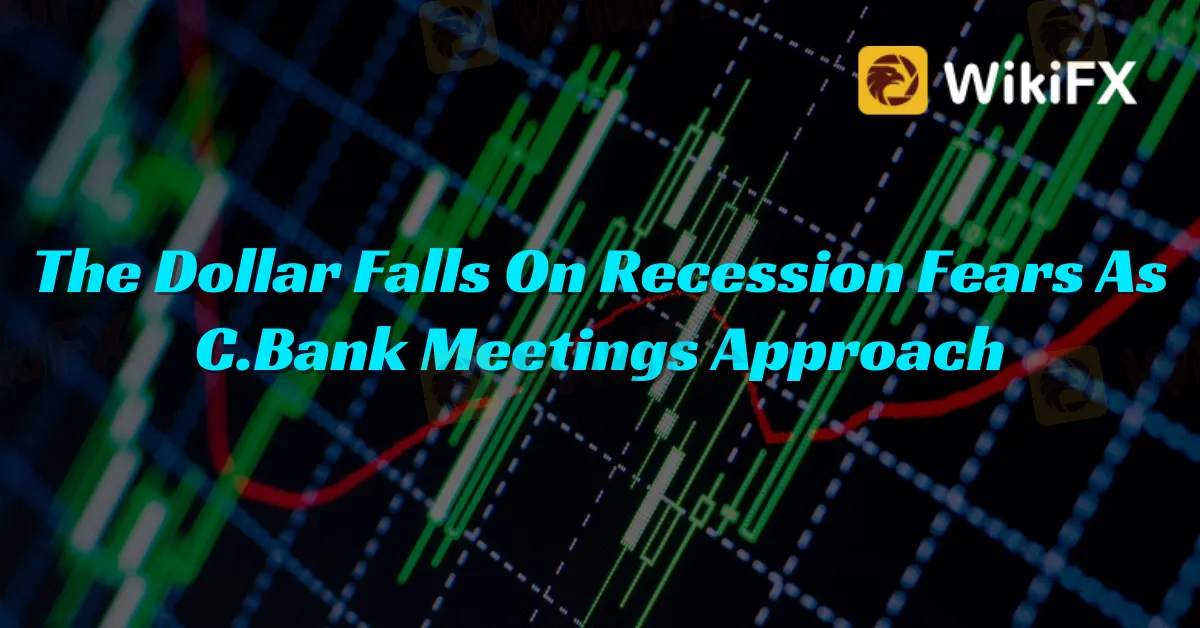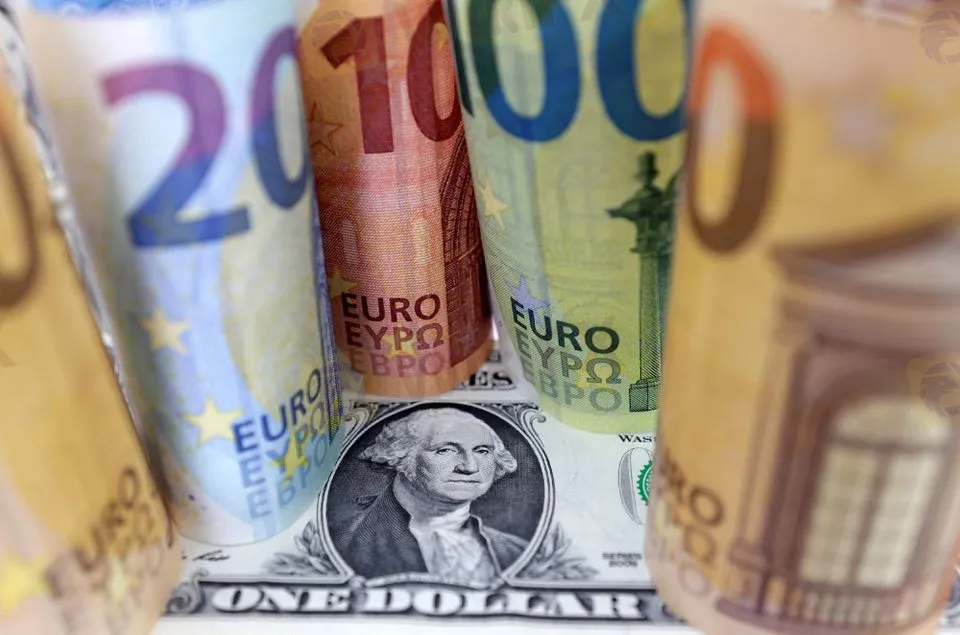简体中文
繁體中文
English
Pусский
日本語
ภาษาไทย
Tiếng Việt
Bahasa Indonesia
Español
हिन्दी
Filippiiniläinen
Français
Deutsch
Português
Türkçe
한국어
العربية
The Dollar Falls On Recession Fears As C.Bank Meetings Approach
Abstract:The dollar fell on Friday as concerns about a US slowdown grew, with markets on high alert ahead of a spate of central bank meetings next week, with the Federal Reserve taking center stage.

The dollar fell on Friday as concerns about a US slowdown grew, with markets on high alert ahead of a spate of central bank meetings next week, with the Federal Reserve taking center stage.
The euro surged over 0.5% against the US dollar overnight, closing close on a six-month high reached the start of the week. It was recently 0.23% higher at $1.0579 and is on pace for a third consecutive week of gains.
Sterling also gained 0.23% overnight, closing at $1.22695, not far from Monday's six-month high of $1.2345. The Japanese yen increased by 0.4% to 136.04 per dollar.

The number of Americans submitting new claims for unemployment benefits grew marginally last week, according to figures released on Thursday, with continuing claims reaching a 10-month high in late November, fueling worries that the world's biggest economy may face a recession next year.
“We've got a very difficult forecast the next year, which is playing into traders' thinking process. We're looking...at considerably weaker growth internationally, lower growth out of the U.S. as well,” said Jarrod Kerr, chief economist at Kiwibank.
After falling 0.3% overnight, the US dollar index slipped 0.27% to 104.53.
This quarter, it has dropped about 7%, putting it on course for the greatest quarterly drop since 2010.
“It's (also) very much positioning right now,” Kerr noted, referring to the Federal Reserve's policy meeting next week.
Money markets are pricing in a 93% likelihood of the Fed raising rates by 50 basis points, with rates now expected to peak at just under 5% in May.
Expectations that the Fed would slow the pace of interest rate rises and that rates may not climb as high as originally anticipated have knocked the dollar more than 8% off its two-decade high versus a basket of currencies, which was reached in September.
U.S. Treasury yields Treasuries have also fallen, with the two-year yield, which often reflects interest rate forecasts, recently trading at 4.3035%, down from a 15-year high of over 4.9% last month.

A region in the United States that is carefully monitored. The Treasury yield curve, which measures the difference in rates between two- and ten-year Treasury notes, was inverted at -83.7 basis points.
An inversion of this yield curve is usually a sign of impending recession.
The European Central Bank and the Bank of England will both make monetary policy decisions next week, with markets looking for clarity on the outlook for 2023.
The Australian dollar was up 0.4% at $0.6797, while the New Zealand dollar was up 0.42% at $0.6407.
Because they are often used as liquid proxies for the Chinese yuan, the antipodean currencies have benefited from China's recent relaxation of its harsh COVID regulations.
The offshore yuan gained more than 0.2% against the dollar, reaching 6.9424.
“The China reopening theme is a huge one, particularly (coming) from a low base,” said Christopher Wong, a currency strategist at OCBC.
“Chinese assets were badly oversold prior to the current comeback. More reallocation back to RMB-assets would boost RMB.”
Stay tuned for more Forex News.
Download the WikiFX App from the App Store or Google Play Store to stay updated on the latest news. Also available for Windows Computer
Dowload link: https://www.wikifx.com/en/download.html

Disclaimer:
The views in this article only represent the author's personal views, and do not constitute investment advice on this platform. This platform does not guarantee the accuracy, completeness and timeliness of the information in the article, and will not be liable for any loss caused by the use of or reliance on the information in the article.
Read more

One article to understand the policy differences between Trump and Harris
In the current political climate, understanding the policy differences between the main candidates has become increasingly important. As the 2024 U.S. presidential election approaches, the intense rivalry between Trump and Harris not only influences voters' decisions but also determines the future direction of the nation at a crucial time. With voting imminent, voters face two distinctly different governance philosophies and policy directions that impact not only U.S. domestic and foreign policy but also profoundly affect the global investment landscape.

What would happen if Harris and Trump tie in the Electoral College?
As the 2024 U.S. presidential race approaches, investors worldwide are closely watching potential outcomes and their implications for global markets. While a 269-269 Electoral College tie between Vice President Kamala Harris and former President Donald Trump remains unlikely, its occurrence would set the stage for an unprecedented period of political uncertainty, triggering a contingent election decided by Congress. Such uncertainty would ripple across forex, stock, and oil markets, where stability and predictability are prized. Here’s a look at how a tie could affect these key financial sectors.

Social Media Investment Scam Wipes Out RM450k Savings
A former finance officer in Malaysia lost RM450,000 in savings after being deceived by an investment scheme advertised on social media.

Malaysian Woman's RM80,000 Investment Dream Turns into a Nightmare
A 50-year-old Malaysian woman experienced a devastating loss exceeding RM80,000 after falling victim to an online investment scam that preyed on her aspirations for substantial returns. The victim, a former secretary at a private firm, had initially hoped to secure a profitable investment opportunity but instead found herself deceived by a fraudulent scheme.
WikiFX Broker
Latest News
How Sentiment Analysis Powers Winning Forex Trades in 2024
Capital One Faces Potential CFPB Action Over Savings Account Disclosures
Malaysian Woman's RM80,000 Investment Dream Turns into a Nightmare
Social Media Investment Scam Wipes Out RM450k Savings
FP Markets Received Three Major Awards
One article to understand the policy differences between Trump and Harris
How can the forex fix be manipulated?
CMC Markets and ASB Bank Form Strategic Partnership
FX SmartBull Review! Read first, then Invest
Bangladesh steps up payments to Adani Power to avoid supply cut
Currency Calculator


